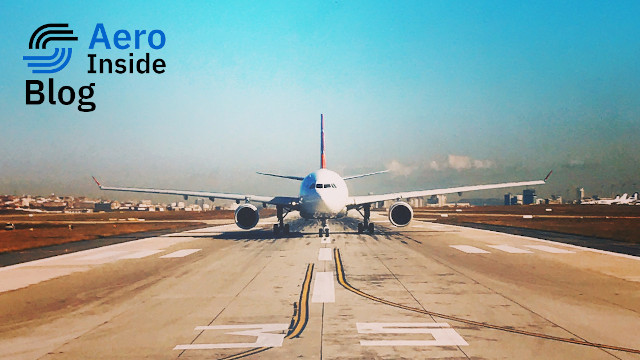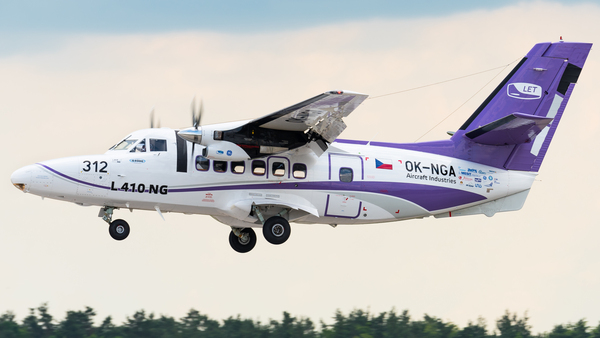Finnair E190 at Oslo on Oct 23rd 2010, struck runway edge lights during takeoff
Last Update: January 22, 2013 / 19:53:09 GMT/Zulu time
Incident Facts
Date of incident
Oct 23, 2010
Classification
Incident
Airline
Finnair
Aircraft Type
Embraer ERJ-190
ICAO Type Designator
E190
The serious incident was caused when the flight crew mistook the left runway edge lights for runway centre line lights while lining up. This resulted in a misaligned take-off over the elevated runway edge lights as well as damage to the runway lights and the aircraft itself. Inadequate Crew Resource Management was a contributing factor.
Other possible contributing factors included darkness as well as the special characteris-tics of the taxiways, the runway and the runway shoulder areas. Unsatisfactory radio phraseology and air traffic control clearances as well as the rapid rate of speech may have caused subconscious haste of the flight crew.
Weather was good with visibility at 9km, winds calm, few clouds at 300 feet, temperature -2 deg C and dew point -3 deg C. Taxiways and runways were clear and dry.
The captain (43, ATPL, 8,973 hours total, no hours on type provided) was pilot flying, the first officer (30, ATPL, 2,672 hours total, no hours on type provided) was pilot monitoring. The aircraft had taxied to Alpha South next to runway 01L for de-icing. Following de-icing, which took about 7 minutes, the crew requested taxi instructions from Alpha South and received "... taxi to 01 Left and 01 Left, cleared take-off, wind calm." 13 seconds later the aircraft left Alpha South, the taxi checklist was processed including takeoff briefing, loadsheet information, trim and flap setting. The line up checklist, usually processed after receiving line up clearance, was subsequently processed. 53 seconds after leaving Alpha South the TOGA button was pushed for departure from runway 01L.
The captain said in post flight interviews that he had checked the approach to his left being clear of other traffic while lining up, which required him to turn backwards to see traffic on short final due to the acute angle of the taxiway to the runway. To ease seeing the traffic he had veered left off the taxiway center line, which the AIBF reasoned made it more difficult to judge the position relative to the runway center line. After lining up the captain asked the first officer whether he was ready for departure, the first officer replied he was still seeking the standard instrument departure chart as he was trying to bring the chart up on his cockpit laptop, the first officer thus had difficulty monitoring the progress of taxi.
The AIBF reported according to Oslo's ground radar the aircraft lined up aligned with the left hand edge lights of the runway.
The aircraft accelerated along the left runway edge until about the 4th edge light, at which point the captain recognized they were not on the runway center line and steered the aircraft to the right onto the center line. The AIBF stated they could not establish how the captain recognized they were travelling along the left runway edge. However, both pilots heard a clunk almost simultaneously with the course correction which they felt was the sound of the nose gear travelling over a recessed center line fixture. The takeoff continued normally thereafter.
About 2 minutes after becoming airborne the crew concluded they might have collided with runway edge lights and reported to ATC.
A subsequent runway inspection found 3 runway edge lights and fixtures had been run over, lamps #1, #4 and #5. No debris from the aircraft was found.
The finding was reported to the crew. In absence of any abnormal indication the crew discussed possible damage to the aircraft and decided to do a full flaps landing at Helsinki in order to minimise landing speed. The landing was without further event.
The captain concluded in his air safety report filed after landing that he may have mistaken the left runway edge lights for the runway center line lights.
The aircraft sustained damage to the inner left main gear tyre as well as the right hand nose gear tyre. Both tyres were replaced. Strike marks were found on 5 fan blades of the right hand engine, one of the blades showed a 25mm (one inch) long crack parallel with the fan blade chord. Dents were found on the second and third stage compressor blades, the damage exceeded the maximum permissable values, the engine was replaced.
The AIBF stated following a simulator test: "When approaching the runway from TWY A1, the green taxiway centre line lights are straight ahead and the green runway threshold lights are on the left. These lights can confuse the pilot, especially if his gaze moves from the front sector, for example, towards the final approach. Moreover, the green runway entry point centre line lights on taxiways A1 and A2 made it more difficult to discern the right runway edge lights." and later continued "Due to its location, it was difficult to spot the runway designation marking (01L) on the runway centre line. This is true irrespective of the taxi route: i.e. whether one enters the runway along the TWY centre line lights or takes the route used in this occurrence." and finally stated "The view from the LH runway edge lights was noticeably abnormal. The RH runway edge lights were not clearly visible. The runway centre line lights could easily be mis-taken for the RH edge lights, and the LH edge lights for the centre line lights. However, there were no lights on the left side of the aircraft that could have been interpreted as edge lights. When the PAPI lights were on they provided a quite clear indication of being to the left of the centre line. Their effect only intensifies as the take-off run progresses."
The AIBF analysed that the nose gear ran over the #1 edge lights before turning to line up, the aircraft was then steered slightly left to the edge lights in order to prevent the nose gear running over what the captain assumed were the runway center line lights. When he corrected the aircraft heading by about 3 degrees to steer the aircraft to the center line, the right hand nose tyre went over the 4th edge light probably causing the clunking sound heard. The inner left hand tyre then ran over the 5th edge light. It is probable, that debris of the collision between right hand nose gear tyre and the 4th edge light flung parts of the 4th light fixture into the right hand engine.
The AIBF analysed: "The pilots said that the aircraft did not handle abnormally, nor were the engine values outside the normal range. The take-off run was continued and the flight eventually land-ed in Helsinki. The investigation commission believes that the justified decision would have been to abort the take-off. This was because the aircraft was clearly on top of the runway edge lights and even partly outside the runway strip. When the captain noticed that the aircraft was misaligned it would have been safe to reject the take-off because the speed was still low."
The AIBF analysed that the combined taxi and takeoff clearance, deviating from standard phraseology, should not have occurred. Instead a taxi to holding point runway 01L should have been issued and while the aircraft was approaching the holding point the line up and takeoff clearance should have been issued.
The AIBF stated that the Accident Investigation Board Norway had issued a safety recommendation (editorial note: along safety recommendations issued by other investigation authorities) in 2006 and 2010 stating: "The AIBN recommends that Avinor considers implementing a procedure where take-off clearance is not issued before the air traffic controller has verified that the aircraft has passed a point where the only remaining possibility for departure is on the intended runway."
Incident Facts
Date of incident
Oct 23, 2010
Classification
Incident
Airline
Finnair
Aircraft Type
Embraer ERJ-190
ICAO Type Designator
E190
This article is published under license from Avherald.com. © of text by Avherald.com.
Article source
You can read 2 more free articles without a subscription.
Subscribe now and continue reading without any limits!
Read unlimited articles and receive our daily update briefing. Gain better insights into what is happening in commercial aviation safety.
Send tip
Support AeroInside by sending a small tip amount.
Related articles
Analytics in the Cockpit: How Denis Krainov Turns Flight Data Into Safer Operations
Image: Denis Krainov | LinkedIn Each flight generates data that extends beyond altitude and speed. Within every flight lies information that helps…
AeroInside Monthly Aviation Safety Review October 2025
October 2025 was a busy month in aviation safety. Please find our summary below.All in all, 62 new articles have been published during last month. 5…
How to Prepare for Flights to Asia: Key Packing Tips
Asia, especially its south-eastern part, is among the world's most beautiful and thrilling destinations. You can experience it all, from cultures and…
How Fast Track Services at JFK Airport Can Save You Time and Stress
Discover how JFK Airport fast track services can save you 60+ minutes and reduce travel stress. Learn about expedited security, customs, and…
Aviation Safety with Confined Space Rescue Training
In the aviation industry, workers often encounter confined spaces, areas that are hard to access and provide limited ventilation, which can increase…
Newest articles
Van L410 at Mestia on Jul 13th 2025, unintentional engine shut down on landing
A Van Air Europe Let L-410, registration OK-VAA performing flight V9-10 from Tbilisi to Mestia (Georgia), had landed on Mestia's runway and was…
Jetblue A320 near Tampa on Oct 30th 2025, inflight upset causes injuries
A Jetblue Airbus A320-200, registration N605JB performing flight B6-1230 from Cancun (Mexico) to Newark,NJ (USA), was enroute at FL350 about 70nm…
Subscribe today
Are you researching aviation incidents? Get access to AeroInside Insights, unlimited read access and receive the daily newsletter.
Pick your plan and subscribePartner

ELITE Simulation Solutions is a leading global provider of Flight Simulation Training Devices, IFR training software as well as flight controls and related services. Find out more.
SafetyScan Pro provides streamlined access to thousands of aviation accident reports. Tailored for your safety management efforts. Book your demo today
AeroInside Blog
Popular aircraft
Airbus A320Boeing 737-800
Boeing 737-800 MAX
Popular airlines
American AirlinesUnited
Delta
Air Canada
Lufthansa
British Airways


